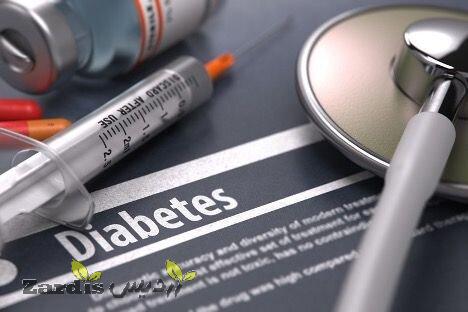Diabetes is a chronic disease that may involve all people from any age range. There are different types of diabetes, the type that seniors usually get involved in type 2 diabetes. Despite type 1 diabetes, called juvenile diabetes, type 2 diabetes occurs due to a bad lifestyle and obesity.
It means that type 2 diabetes is closely related to different risk factors that are not necessarily genetically related. Since diabetes affects people’s lives entirely, it is crucial to diagnose diabetes in seniors as soon as its symptoms appear.
Early Diagnosis of Diabetes in Seniors
In general, to see if you have diabetes or not, you should check your blood sugar level. Since high blood sugar levels are a sign of diabetes, knowing what blood glucose level is necessary. Based on scientific works, a fasting blood sugar level for healthy people is lesser than 100 mg/dL while for diabetic persons is higher than 126 mg/Dl. In addition, a blood sugar level between 100 -125 is considered pre-diabetes.

Despite blood sugar level, diabetes has other physical symptoms, including
- Feeling thirsty
- Losing weight
- High blood sugar despite not eating
- High frequency of urination
Hyperglycemia/ Hypoglycemia
Both hyperglycemia and hypoglycemia are dangerous for people with diabetes. Hyperglycemia describes a situation in which the blood sugar level increases while hypoglycemia means lower blood sugar than normal level.
Severe hypoglycemia is dangerous since it may lead to unconscious and comma. Some physical symptoms of hypoglycemia, through which you can find that you are going to faint, include:
- Feeling dizziness and vomit
- Sweating
- Fatigue
- The skin gets pale
- Reduced blood flow and decreased body temperature
On the contrary, hyperglycemia or high blood sugar level has its specific symptoms like:
- Thirsty
- High frequency of urination
- Weakness
- Sleepiness
- Unexplained weight loss
- Vision blurriness
Control Blood Sugar Level
Keeping blood sugar levels in the normal range is vital for diabetes. Seniors with diabetes use different ways to manage their blood sugar. These ways are a combination of changes in eating behaviour and consuming drugs. Some of the ways to manage blood glucose are:
- Blood sugar pills
- Insulin injection
- Proper diet
The Role of Diet to Control Diabetes in Seniors
Having a proper diet helps seniors with diabetes to control their blood sugar. According to the nutrition in seniors with diabetes article on LivingMaples MAG, a balanced and proper diet for diabetes has several advantages like:
- Keep blood sugar in a normal range
- Provide enough essential nutrients and energy for the body
- Keep blood lipid in a normal range
- Prevent any possible problems caused by diabetes like kidney damages
The critical factor in choosing a proper diet is having precise information about calories and main ingredients. Such ingredients include carbohydrates, sugar, fibre, etc. Some of the best foods that diabetes can benefit from are as follow:
Fish
Eating fish may reduce the risk of developing type 2 diabetes by 50%. Fish is rich in omega-3 fatty acids, so it is recommended to eat fish at least twice a week and 90 grams each time. However, diabetic seniors should not use fish oil capsules except with a doctor’s prescription. It may interfere with their blood sugar regulation.
Onion and Garlic
Both onion and garlic are beneficial spices used in foods to enhance flavour and taste. These spices, however, have positive effects on increasing insulin level and glucose metabolism in the liver in diabetic seniors. In addition, onion and garlic boost insulin sensitivity and thereby decrease blood sugar levels.
Foods Containing a High Amount of Antioxidants
Antioxidants are molecules that can protect us from free radical damages. These molecules exist in higher amounts in some foods more than others. It has been scientifically proved that antioxidants can decrease destructive effects of diabetes like blindness or nerve damage through free radical scavenging. Some natural antioxidants are vitamin C, E, beta-carotene, etc. These antioxidants are abundantly existing in fresh vegetables like tomato, carrot, citrus, kiwi, etc.
It is noteworthy that before choosing any food, check its Glycemic index. Glycemic index is a value that shows a specific food how quickly (or slowly) it can increase blood sugar level. For seniors with diabetes, foods with a glycemic index lower than 55 are appropriate. Glycemic index should not be mistaken by glycemic load (GL) of a food. Glycemic load is a value that considers the amount of carbohydrate in food and how quickly it can increase blood sugar levels. Usually, a glycemic load under 10 is suitable for diabetes. In this regard, the glycemic GL of watermelon is 2 per 100 g, while its GI is 72. So, diabetes should pay attention to both these values while choosing a proper diet.
Conclusion
Early diagnosis of diabetes in seniors is crucial since we can take action as soon as possible and before any bad situation happens. Checking blood glucose is the fastest and easiest way to see if you have diabetes or not. However, diabetes has some physical symptoms. Hypo and hyperglycemia can be dangerous for seniors with diabetes, so people should carefully control their blood sugar levels. One way to keep blood sugar in a normal range is editing lifestyle and eating behaviour.
References: livingMaples.com
- News code 33873
- 299 View
- بدون نظر
Zardis news | The latest news of Iran and the world
تمامی حقوق مطالب برای Zardis news محفوظ است و هرگونه کپی برداری بدون ذکر منبع ممنوع می باشد.
طبق ماده 12 فصل سوم قانون جرائم رایانه ای کپی برداری از قالب و محتوا پیگرد قانونی خواهد داشت.
طراحی و اجرا: سامانه سایت ساز زردیس







